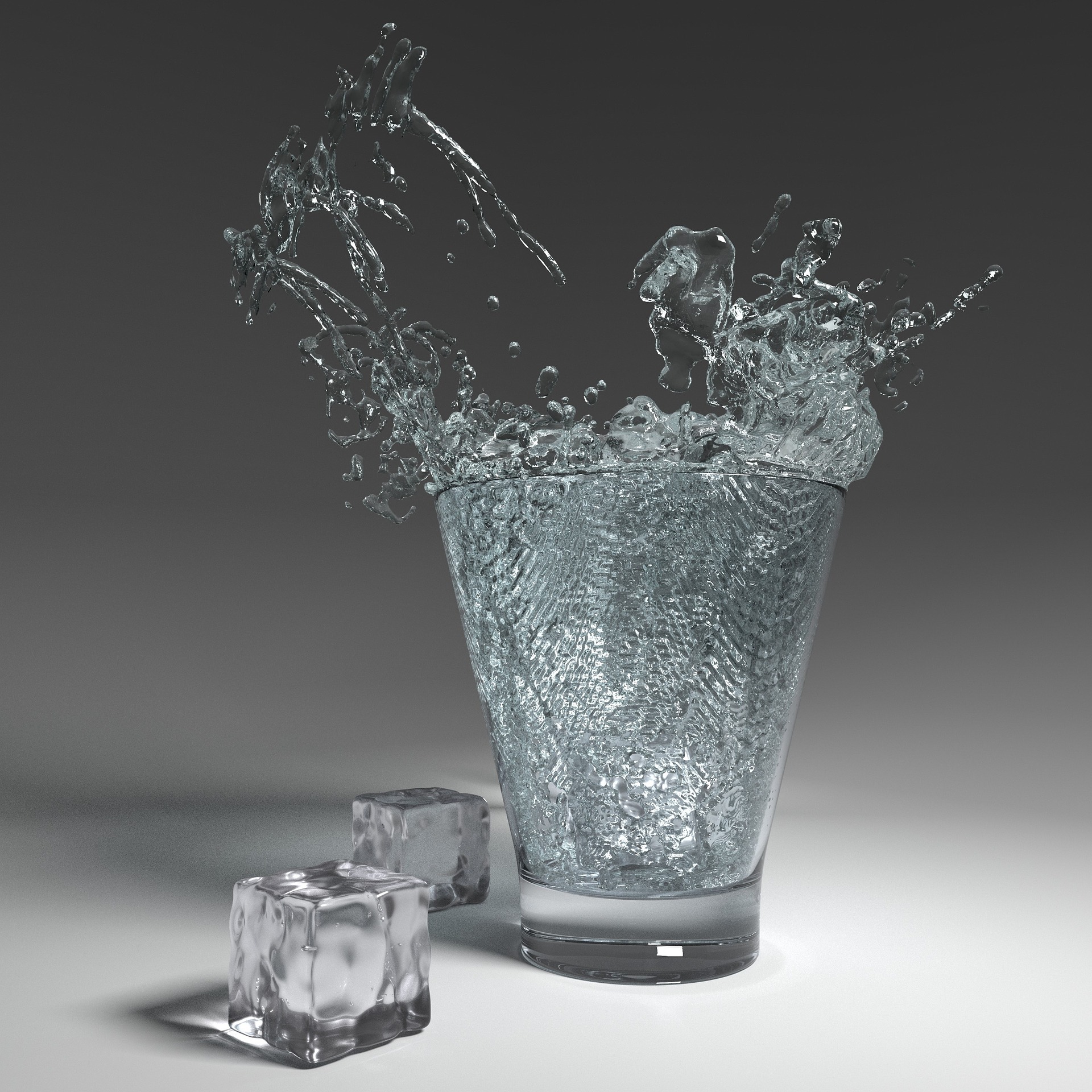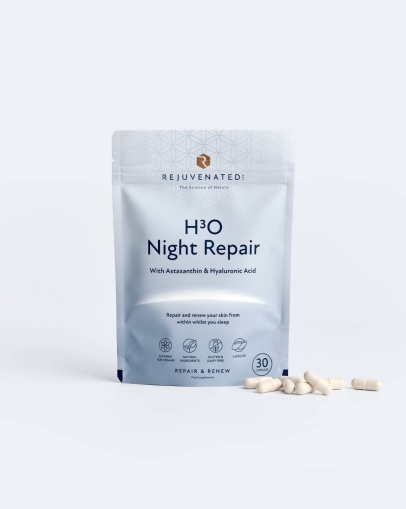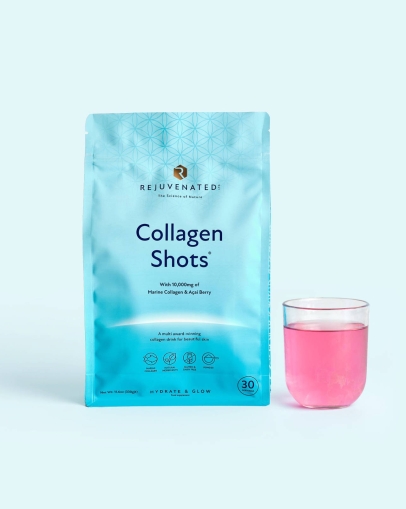What is Hyaluronic Acid, and what does it do?

Hyaluronic acid is a naturally occurring substance found in the body, particularly in the skin, connective tissues, and joints. Made up of sugar molecules, this large molecule plays an important role in keeping our tissues and joints lubricated and hydrated.
In recent years, hyaluronic acid has become a popular ingredient in supplements and skincare products due to its ability to attract and retain moisture in the skin. This fantastic capability improves hydration and reduces the appearance of fine lines and wrinkles, making it an excellent addition to any beauty product.
But not only that - but it also improves joint health and mobility. Hyaluronic acid is a versatile and beneficial substance with many potential uses and benefits for the body. Let’s find out more.
What is Hyaluronic Acid?
Hyaluronic acid occurs naturally in the connective tissue in our bodies, with 50% of it found in our skin. HA is a major component of the extra cellular matric (ECM), which is the framework that gives our skin its structure.
HA is a glycosaminoglycan, a polysaccharide which is a large sugar and a gel like molecule providing a cushioning agent in all mammals. HA cushions joints, nerves, skin, hair and even the eye.
What Does Hyaluronic Acid Do?
Hyaluronic acid, as we have seen above, plays a part in many functions in the body. It has a number of properties, enabling it to perform many functions.
When applied topically, hyaluronic acid can help to hydrate the skin by attracting and retaining moisture. It has the ability to hold up to 1000 times its weight in water, making it an excellent moisturiser for dry and dehydrated skin in particular. The hydration hyaluronic acid provides can help to improve the appearance of fine lines and wrinkles, as well as increase skin elasticity and smoothness.
That’s not all, however. Hyaluronic acid has anti-inflammatory and antioxidant properties too. This allows it to reduce redness, soothe irritation, and protect the skin from environmental stressors. So if you’re asking, “What Is Hyaluronic Acid Good For?” the answer is: your entire body.
What causes loss of hyaluronic acid?
As with most things that keep us young, the levels of HA diminish with age. Our bodies naturally contain 150gm of hyaluronic acid, it is in every part of the body and has multiple functions. Scientific studies show that it’s associated with skin hydration, stimulating the production of collagen and as an antioxidant to protect the body.
A third of the HA in our body turns over every day as it degrades and resynthesises, but as we age this process slows. It’s believed that hyaluronic acid levels fall to just 50% of the amount our bodies require by our mid-40s.
Hyaluronic acid benefits for skin?
Because hyaluronic acid can hold high amounts of water it keeps the skin hydrated and gives it a plumper glowing appearance. HA acts as a sponge in between the collagen and elastin fibres to absorb water and plump out the skin.
It naturally reduces the signs of ageing by decreasing ‘epidermal water loss’ associated with sun exposure and skin dryness. One of the benefits of this hydrating action is to give a smoother appearance and reduce fine lines and wrinkles.
These are not the only benefits or HA, though. Let’s take a look.
How hyaluronic acid helps our eyes
The fluid inside the eye socket is composed almost entirely from HA. Many people experience dry eyes, whether it represents itself as soreness, redness, itchiness, blurriness, light sensitivity, eyes watering more than normal or feeling gritty; hyaluronic acid can help combat the symptoms. You can opt for eye drops or a HA supplement to help lubricate the eyes.
Is hyaluronic acid good for joints?
HA lubricates the space between your bones; when this is depleted, the bones are more likely to grind together which is painful.
Glucosamine is well known for its benefits to joint health. It is part of a group of compounds associated with joint strength. This group of compounds is called GAGS, or glycosaminoglycans, and hyaluronic acid the most active amongst the group for lubrication and acting as a shock absorber.
How to Use Hyaluronic Acid
When it comes to using hyaluronic acid, there are a few things to keep in mind. First, it's important to choose a carefully formulated product that contains an effective concentration of hyaluronic acid. Look for products that list hyaluronic acid high up on the ingredient list, and avoid those that contain any harsh ingredients that could dry out or irritate your skin.
The two main options that you have with hyaluronan are skin products and supplements. Supplements, like our beauty and wellness supplements, are simple and straightforward. You can follow the recommended dosage, and continue your day, while it improves your skin and lubricates your joints from the inside out.
To use hyaluronic acid topically, start with a freshly cleansed and toned face. Apply a pea-sized amount of the product onto your fingertips and gently press it into your skin, focusing on any areas that are particularly dry or dehydrated. You can use hyaluronic acid in the morning or at night, depending on your preference.
Which foods contain hyaluronic acid?
If you want to increase your hyaluronic intake naturally, there are a number of foods that you can eat. Here are the foods with the highest concentration of hyaluronan:
Soy foods: Including tofu, soy milk and soy chunks
Citrus fruits: Including lemon, orange, lime and grapefruit
Tuber vegetables: Including potatoes and sweet potatoes
What Rejuvenated supplements include hyaluronic acid?
Hyaluronic acid is such a powerfully effective ingredient that we’ve added it to a number of our award-winning beauty and wellness products. You will find hyaluronic acid in the ingredients lists of our Collagen shots, H3O Night Repair and H3O Skin Hydration.Products containing hyaluronic acid

H3O Night Repair (30 Capsules)
Capsules - 30 servings
Take one per day
To wake with glowing skin and feel refreshed

Collagen Shots (30 Servings)
Collagen Powder - 30 Servings
Mix with water and drink, once per day
For youthful, healthy skin






